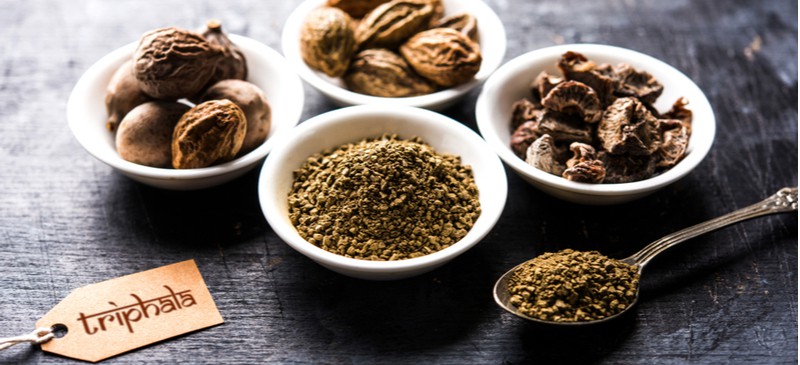This Dr. Axe content is medically reviewed or fact checked to ensure factually accurate information.
With strict editorial sourcing guidelines, we only link to academic research institutions, reputable media sites and, when research is available, medically peer-reviewed studies. Note that the numbers in parentheses (1, 2, etc.) are clickable links to these studies.
The information in our articles is NOT intended to replace a one-on-one relationship with a qualified health care professional and is not intended as medical advice.
This article is based on scientific evidence, written by experts and fact checked by our trained editorial staff. Note that the numbers in parentheses (1, 2, etc.) are clickable links to medically peer-reviewed studies.
Our team includes licensed nutritionists and dietitians, certified health education specialists, as well as certified strength and conditioning specialists, personal trainers and corrective exercise specialists. Our team aims to be not only thorough with its research, but also objective and unbiased.
The information in our articles is NOT intended to replace a one-on-one relationship with a qualified health care professional and is not intended as medical advice.
Triphala: An Ayurvedic Herbal Formulation that Fights Cancer and Boosts Fat Loss
February 7, 2023

Used for well over 2,000 years, triphala is a staple of Ayurvedic medicine. In India, it’s considered the greatest and most versatile of all herbal formulations.
What is triphala or triphala churna? It’s a traditional herbal formulation made from the dried powder of three different fruits. The name comes from combining the Sanskrit words “tri” meaning three, “phala” meaning fruit and “churcha,” which means powder.
Triphala contains gallic acid, ellagic acid and chebulinic acid, which are all strong antioxidants. It also has flavonoids and polyphenols, which have antibacterial, anti-inflammatory and antidiarrheal abilities.
Triphala’s purported uses include the natural treatment of infections, gastrointestinal issues, inflammation, high cholesterol, immune system malfunction and even cancer. When you look at the three fruits individually or triphala as a whole and these benefits, this ancient remedy may be worth adding to your supplement arsenal.
What Is Triphala?
Triphala is derived from the following three fruits: amla, haritaki and bibhitaki. Dried powder from these three medicinal plants are mixed in equal parts to make a proper triphala powder (or churna). Each of these fruits has medicinal value on its own so combining the three into triphala can give you all of the individual benefits and more.
References to the use of triphala can be found in the Sushrut Samhita, which is dated to 1500 BC. As such, triphala is one of the longest-used herbal remedies in the world. Triphala contains five of the six tastes recognized in Ayurveda (sweet, sour, bitter, pungent and astringent). It’s only missing the salty taste.
Amla (Emblica officinalis) is also commonly known as Indian gooseberry and has been one of Ayurveda’s most prized rejuvenators for centuries. The fruit is very high in vitamin C and is used either alone or in combination with other plants to treat the common cold and fever and as a diuretic, digestive, laxative, liver tonic, restorative and anti-inflammatory agent. Amla is said to have 20 times the vitamin C content of an orange.While useful for all doshas, it’s said to be particularly effective for balancing the Pitta dosha.
Haritaki or Harada (Terminalia chebula) is also called the Tibetan “king of medicine.” Haritaki is widely used in the traditional medicine of India and Iran to treat a variety of health issues including constipation, dementia and diabetes. It’s also anti-inflammatory and calming to the Vata dosha.
Bibhitaki (Terminalia bellirica) is another powerful ancient rejuvenator with detoxifying qualities. It is extensively used in traditional Indian Ayurvedic medicine for the treatment of diabetes, high blood pressure and rheumatism. Studies have even shown that this fruit’s extract might be able to inhibit atherosclerosis plaque progression. This fruit is known known for benefits to the dosha known as Kapha.
Some triphala preparations also include guggulu, a tree gum resin, for added therapeutic outcomes.
Health Benefits
1. Cancer Fighter
A 2015 study looked at the antiproliferative (stops the growth of cancer cells) and proapoptotic (encouraging the programmed cell death of cancer cells) effects of triphala on colon cancer cells and human colon cancer stem cells. They found that the methanol extract of triphala contains a variety of phenolics including naringin, quercetin, homoorientin and isorhamnetin.
Overall, they found that the triphala extract was, in fact, able to suppress the spread of and induce cell death of human colon cancer stem cells, making it worthy of further research as a natural anti-cancer treatment.
The gallic acid in triphala has been shown in scientific research to have promising anticancer activity, specifically when it comes to prostate cancer cells. Triphala mouth rinse may help to reverse tobacco-induced oral precancerous lesions, according to a 2014 study. Animal studies have also shown that it has the ability to kill tumor cells but spare normal cells, making it very promising as a potential anticancer treatment.
Therefore, this herbal formulation could be a valuable part of an anti-cancer diet.
2. Natural Laxative, Colon Cleanser & Possible Colitis Helper
Natural laxatives like triphala tend to be gentler than over-the-counter laxatives, nourish the digestive tract and help produce regular bowel movements. Triphala can help to naturally cleanse the colon. Having regular bowel movements are important for removing bacteria, heavy metal detox and eliminating excess fatty acids from the body.
A colon cleanse can also impact the nervous system positively, which is why it might help symptoms like fatigue and anxiety. When it comes to the elimination process, amla supports intestinal repair, haritaki strengthens the intestinal muscles to contract more efficiently when the bowels need to move, and bibhitaki pulls the old mucus off the wall.
A 2011 study showed that a polyherbal formulation in powder form containing isabgol husk, senna extract and triphala extract was an effective, safe and non-habit-forming herbal laxative formulation for constipation relief. Results of another study showed that triphala (300 mg/kg) has a considerable and reliable effect in reducing colitis in rats. They attributed the positive effect on colitis to its abundant presence of flavonoids and high antioxidant activity.
3. Weight Loss
There is no shortage of triphala weight loss articles to be read, but can triphala really help with weight loss or is it just hype? Since triphala can encourage regular bowel movements, it makes sense that it could help with weight management and studies are proving triphala’s ability to fight obesity.
One 2012 study investigated the effects of triphala and its constituent fruits on diet-induced obesity and other symptoms of visceral obesity syndrome in mice. The mice were fed a high-fat diet for 10 weeks. Some of these mice had their diets supplemented with herbal preparations of triphala or its constituents. The mice who were given the triphala or its component fruit extracts had significant reductions in body weight and percentage of body fat. The triphala treatment also reversed pathological changes in liver tissue.
Studies of human obese subjects have had similar results. One study looked at obese men and women between 16 and 60 years of age. For 12 weeks, subjects were randomly assigned to take either five grams of triphala or a placebo two times daily. The triphala group experienced significantly greater decrease in weight as well as waist and hip circumference as compared to the placebo group. Triphala has antioxidant, free radical scavenging and anti-hyperlipidemia abilities, which all have a positive effect on metabolic health and discourage obesity. (12)
4. Lower Cholesterol
Cholesterol is a naturally occurring substance made by the liver and required by the body for the proper function of cells, nerves and hormones. As a result, cholesterol is actually crucial in healthy amounts, but when it’s too high, it can be problematic.
Cholesterol can combine with fat, calcium and other substances in the blood to form plaque. Plaque then slowly builds up and hardens in the arteries, causing them to narrow. This buildup of plaque, a condition called atherosclerosis, can lead to heart disease, heart attack and stroke.
Triphala can lower cholesterol levels and arterial plaque. A study published in the Journal of the Pharmaceutical Society of Japan showed that total cholesterol as well as LDL (“bad cholesterol”) were significantly reduced in animal subjects with high cholesterol that were treated with triphala. One of its three fruits, bibhitaki, has also been shown by researchers to inhibit atherosclerosis plaque progression.
5. Anti-Inflammatory and Anti-Arthritis
Triphala’s high antioxidant and polyphenol content make it an excellent anti-inflammatory. Almost every disease involves some degree of inflammation. Arthritis is definitely an inflammatory disease; it’s an inflammation of one or more joints, which causes pain and stiffness that can worsen with age.
In an arthritis diet, a smart natural approach should involve consuming anti-inflammatory foods and supplements. Most of the studies have been conducted with animals, but the results are showing that triphala might be a helpful natural remedy for arthritis sufferers. One study specifically showed that it improved bone and cartilage breakdown during rheumatoid arthritis.

How to Use
Triphala should be available at your local health store, and it can easily be purchased online. It can be found in supplement form as a powder, capsule, tablet or liquid extract.
Triphala is usually taken on an empty stomach and can be ingested in a few different ways. The powder can be used to make a tea by adding a half-teaspoon of powder to a cup of hot water. Stir well and wait for it to cool.
You can also combine the powder with honey or ghee before a meal. Tablets and capsules are typically taken once or twice a day, before food. For a liquid supplement, you will typically be directed to take 30 drops in water or juice, 1–3 times daily.
As a digestive tonic and laxative, triphala is best taken in the evening, about two hours after eating, and at least 30 minutes before bedtime. Whether you buy a powder, capsule or tablet, dosing directions should be provided on the packaging. In general, a larger dosing has more laxative effects while a smaller dose tends to be more gradually blood purifying.
Triphala can also be applied topically to the skin to speed the healing of bruises and sunburns. Triphala is traditionally used as a tonic in hair and eye washes.
As always, ask your health care provider for dosing recommendations if you are feeling unsure. Triphala is not addictive and can be taken over long periods of time. However, it is recommended that every 10 weeks, you should stop taking it for two to three weeks in order to give the body a rest and to maintain the effectiveness of the remedy.
Risks and Side Effects
Triphala may cause gastrointestinal side effects. When you first start taking it, side effects may include increased intestinal gas due to possible cleansing and detoxification effects on your digestive tract. If you have loose stools or diarrhea after taking it, then this likely indicates that you are taking too high a dose and you should reduce your dosage.
If you are using triphala for laxative purposes, then you should make sure that you do not exhibit any signs of dehydration including muscle weakness, dizziness or excessive thirst. Discontinue use of triphala if you have symptoms of dehydration.
It should be used carefully or not at all by people taking blood thinning medications. It is not recommend for pregnant or nursing women or children. It also should not be used with cases of diarrhea or dysentery.
If you have any ongoing health concerns or are taking other medications or supplements, check with your doctor to make sure that triphala is an acceptable herbal remedy for you.













